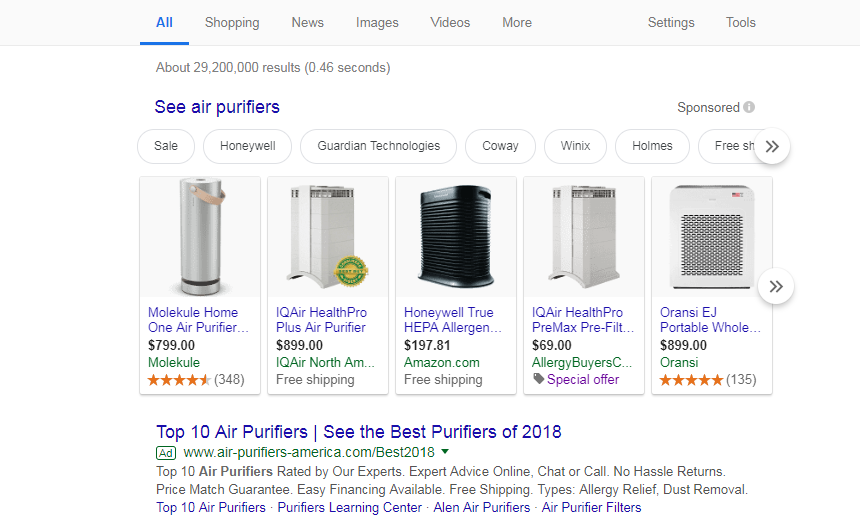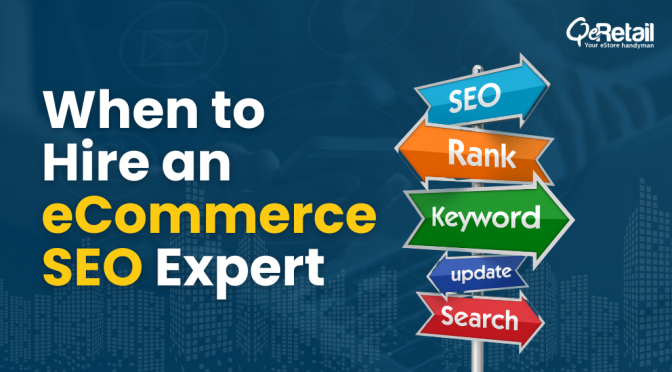Many brands assume that eCommerce marketing is just another digital marketing jargon. As a result, they have attained minimum to moderate success despite having awesome product offerings. eCommerce marketing shares its fundamentals with digital marketing but there are few key areas which one has to keep it in mind to make a clear distinction between them. So is it really rocket science? No…not really. Let’s have a look at it.
Table of Contents
What is eCommerce Marketing?
Ecommerce marketing is a series of steps taken towards building sustainable traffic on an eCommerce store which leads to sales.
Any robust eCommerce marketing takes both aspects into consideration i.e. ‘Online’ marketing and ‘Offline’ marketing. So we really can’t restrict eCommerce Marketing to just the digital marketing part. We will deal with this aspect in more detail in the latter part of the article.
Target Audience
The most fundamental principle about any form of the eCommerce marketing plan is to know your target audience. If you ‘merely’ know about your audience and have this mental sketch of the ideal persona then you should seriously think about changing your business.
We can’t emphasis more on the fact that the success of any eCommerce marketing strategy squarely depends on the degree to which you know your audience. This means that you have a ready document which has information regarding their different (name, age, gender, location, occupation, etc.) attributes.
Keyword Research
Keyword research is an exhaustive topic and can’t be dealt in its entirety over here but we will broadly mention the steps involved in this process.
For beginners, a keyword or keywords are the words or phrases your target audience types in search engines so that they get the information that they are looking for. These are also known as ‘search queries’.
You can use keyword research tools from Moz, Ahrefs, Neil Patel, etc. to find out the keywords. Even Google search bar’s auto-suggests option can give you some idea about the closely searched keywords. The keywords are the links between the target audience’s requirement and your content. If you have a fair knowledge of your target audience’s preferences it will ease up your job in terms of finding the right type of jargon, language, and phrases for your keywords research.
You should do keywords research for every product you have on your website. The easiest way to do is by studying the first-page search engine results of every keyword.
You must aim to build a list of at least 50 keywords which have a high shopping intent behind them, they are used by your competition as well, and they have a high traffic volume.
After this, you must try to find out the topics for which these keywords are being published by your competition. If you are not able to find the topics then you can search for allied topics on Alltop website.
You should try to come up with around 10-12 topics on which you can write a deep insightful article. This will boost your image in front of your audience as subject matter expert and will bring depth to your content.
Soon you should build a database of topics which your audience loves to engage with and will share within their community. This will bring in additional traffic to your website in addition to the organic search engine results.
Content Marketing
Now that you know which topics you can dive deeper into and start talking about, all you have to do is prepare your content marketing calendar which includes different content formats like blogs, videos, product pages, description pages, ebooks, etc. This will serve as the backbone of your eCommerce marketing strategy.
You will have to ensure a continuous stream of fresh content which convinces your audience to keep coming back to your website in anticipation of more useful content.
You can read our blog on content marketing practices to engage your audience.
Website is not the only platform where your content can be published, which brings us to our next step which is Social Media Marketing.
Social Media Marketing
Social media marketing will play a huge role in brandishing your offerings out there. eCommerce brands are especially focusing on Instagram and Pinterest as they are image-driven platforms and for any eCommerce brands this can prove to be an extended channel to showcase products.
The Facebook store has the potential to become an extension of your eCommerce store Platforms like Shopify which lets you run a parallel Facebook store in addition to your main eCommerce store.
Every social media channel is generally preferred outlet for your audience to share their reviews about your product and services. This gives you useful insights about what exactly works for your audience and what isn’t.
You can get some more useful tips to grow your social media presence here.
Search Engine Optimization
As you keep churning out more content for your products they will need to be optimized for search engine rankings. In addition to the earlier mentioned keyword research section, you must do On-Page and Off-Page optimization.
You can go through the essential SEO checklist for online retailers to see what goes into a holistic SEO approach for an eCommerce business.
An effective Search Engine Optimization strategy will result in high organic traffic, quality inbound links and social media engagements.
Email Marketing
Email marketing is the old horse of the marketing arena and it is still holding its ground by being effective in the era dominated by social media and paid advertisements. Any eCommerce marketing strategy is incomplete without email marketing.
The key to successful email marketing is to have a growing pool of people who subscribe to your content. As you keep building on your content, it leads to more website visitors. You should try your best to capture as many email ids on the website and quickly formulate an email marketing campaign targeting your audience.
The campaigns should be tailor-made to suit different type of customers. For example, separate campaigns can be directed towards your current customers, disgruntled customers, potential customers, customers who abandoned the cart, customers who can refer you to new customers and so on.
Search Engine Marketing
On one hand, while you steadily increase your organic traffic through above-mentioned efforts you should also leverage the paid promotion channels like Pay Per Click ads (e.g. Google Adwords), Social Media ads (Facebook, Instagram, etc.), display ads to reach a new segment of audience and hook them to your brand.
These advertisements are very target specific and can be shown only to the section of the audience who are most interested to see your products and click on your ads. For example, Google shopping ads are shown right next to the search results to someone who has keyed in a specific keyword.

Since it is a paid promotion, you can run the campaigns as long as you have the budget for them.
Affiliate Marketing
Affiliate marketing is a commercial understanding between a brand and an affiliate where the Affiliate agrees to sell a brand’s products in return for a commission. Affiliates are people or organizations who would love to promote your product as they are already catering to your target audience.
Bigger brands like Amazon have their affiliate program which is actively sought by many affiliates. But in case of a relatively new brand, the onus is on the brand to find the affiliates. One of the easiest ways to find them is through affiliate networks like ClickBank.com or CJ.com. You may even choose to go your own way to find affiliates but in the former method, you don’t have to worry about the authenticity of the affiliate as these networks have a stringent policy against impostors.
There are three payment models through which the affiliates get paid by the brands. Pay Per Sale is the most widely used model. In this model, the affiliate gets the commission based on the number of sales achieved through the affiliate’s website. The second model is Pay Per Lead wherein the affiliate earns his commission based on the number of leads he is able to generate on the brand’s website through subscription, downloads, etc. The third model is Pay Per Click which is based on the number of clicks the affiliate website is able to get on the brand’s advertisement. The ad destination could be the brand’s website or a landing page which urges the visitor to buy the product.
Influencer Marketing
People have become wary of pushy advertisements and sneaky marketing tricks. As a result Influencer Marketing has gained popularity over the years. It leverages the celebrity’s or Influencer’s existing follower base to promote a brand’s product. By celebrity we don’t only mean the Kardashians and Justin Biebers of the world.
We are talking about people who are well-known faces and have earned their name among their audience as subject matter experts. Their audience looks up to them for advice and guidance. For an upcoming brand, they can easily reap benefits by their association with a quality Influencer.
Here’s a powerful example where an influencer was able to drive huge engagement on Instagram for a noble cause.
The brands mostly pay out their influencers by giving them free products, huge discounts or special access to their yet to be launched products. The influencers share the picture of the products on Instagram or even unbox the product on Youtube, right in front of their audience.
An alternate way of paying out is similar to an affiliate program where they get commissions based on their referrals. A fixed monthly fee model is fast gaining popularity as brands are getting clearer about how Influencer Marketing works for them.
Offline Marketing for eCommerce
As an eCommerce entrepreneur, you should not ignore any of the offline channels of promotion for your brand. Even a major online brand like Amazon has invested in building its offline presence. So why only focus on digital marketing front when you can leverage offline marketing as well. Below are some on-ground marketing ideas everyone should give a try.
Invite Only Exhibitions
As the name suggests that it is only meant for people who are invited to the event. These closed group of people are your ambassadors who would gladly give positive reviews about your brand. This could be an excellent opportunity for you to meet them in person and get further insights about improving your service. Additionally, this can also be an opportunity for you to prepare yourself for a bigger event in the future.
Pop In shop
The Pop In shop is a very creative concept and particularly very useful to owners who can’t afford their own branded shop. The idea is to rent out a small space within a big store of another brand (it has to be a non-conflicting business) and utilize this space to sell your products. This is an innovative way of selling without too much of upfront investment.
Pop up shop
This is a very well known concept which can be implemented without an extensive budget. The idea is to come up with a temporary stall near the main road or a mall where you expect a large turn out of people. This will allow you to test run your product for a short period of time without much investment in infrastructure.
Catalogs and other collaterals
It might sound ironical to invest in print medium for an online store but yes, print is not dead, at least for the time being. Business cards, flyers, leaflets, and brochures are still effective in communicating your brand’s message. A nicely designed product catalog can come handy in situations where your website is not accessible.
Public relations
Getting a little bit of PR love will not hurt your business. You can invest in developing a PR pitch and develop a PR kit which you can readily share with your stakeholders. If your budget permits, you can even think of giving away small branded merchandise to your logistics partners, vendors, etc.
Concluding Thoughts
We have outlined the broader strokes of how eCommerce marketing should be approached. This can vary from case to case as every eCommerce brand might need specific tweaks and modifications which better suits their marketing goals.







